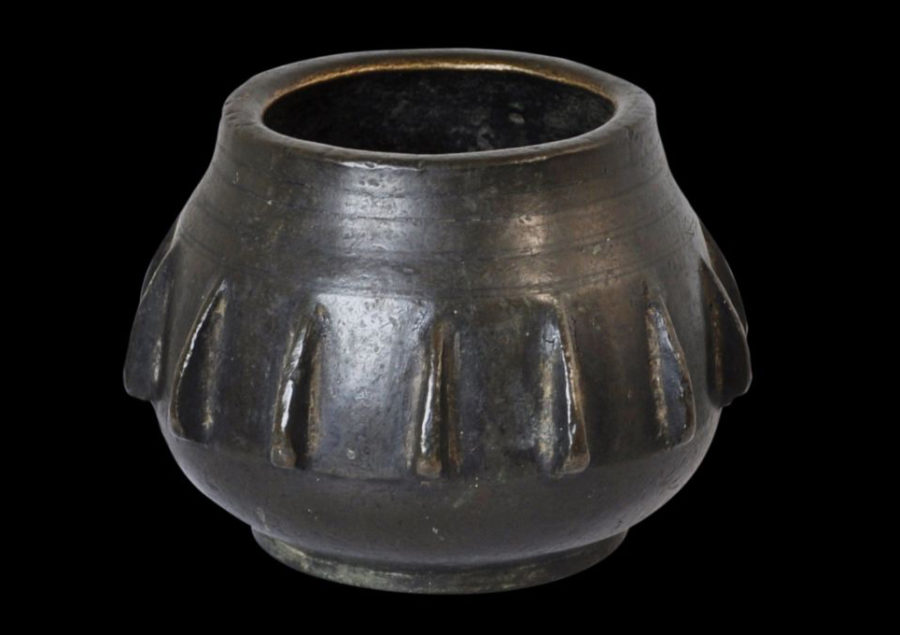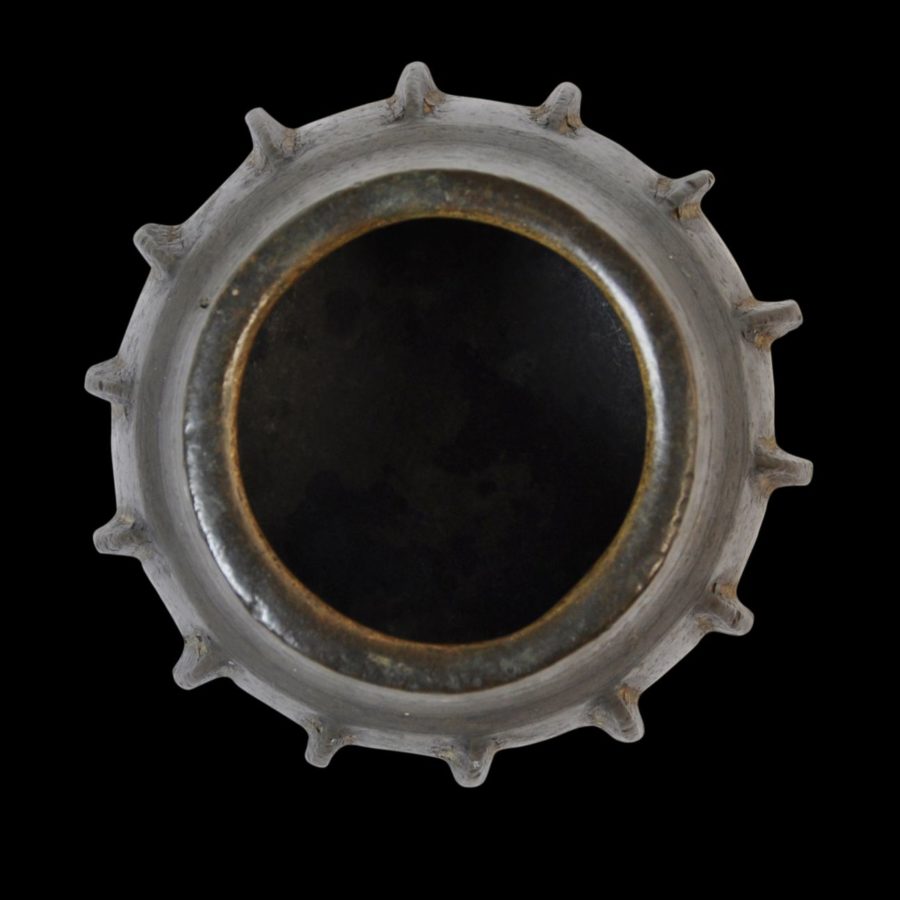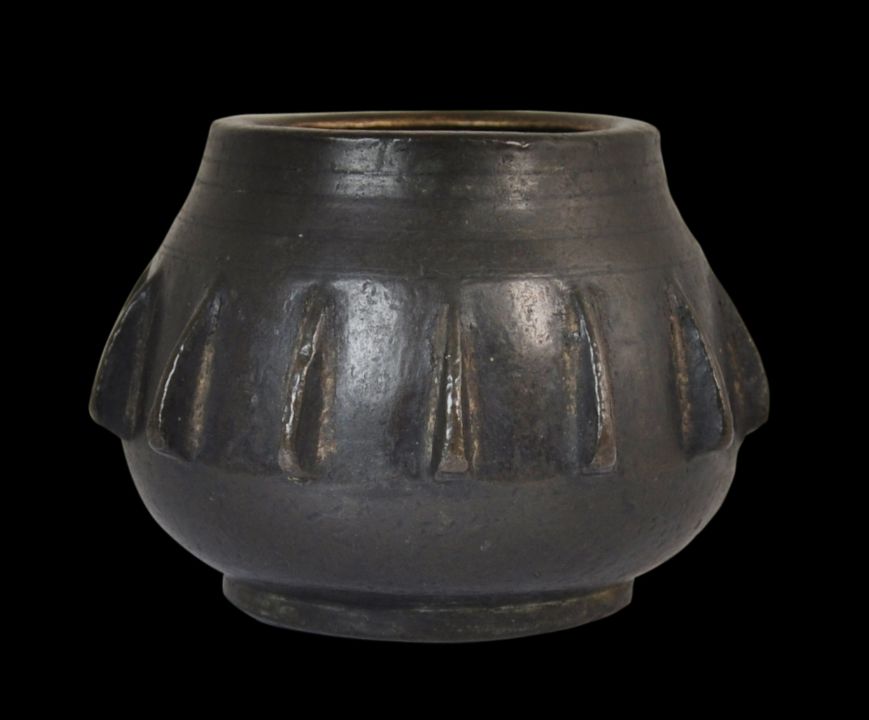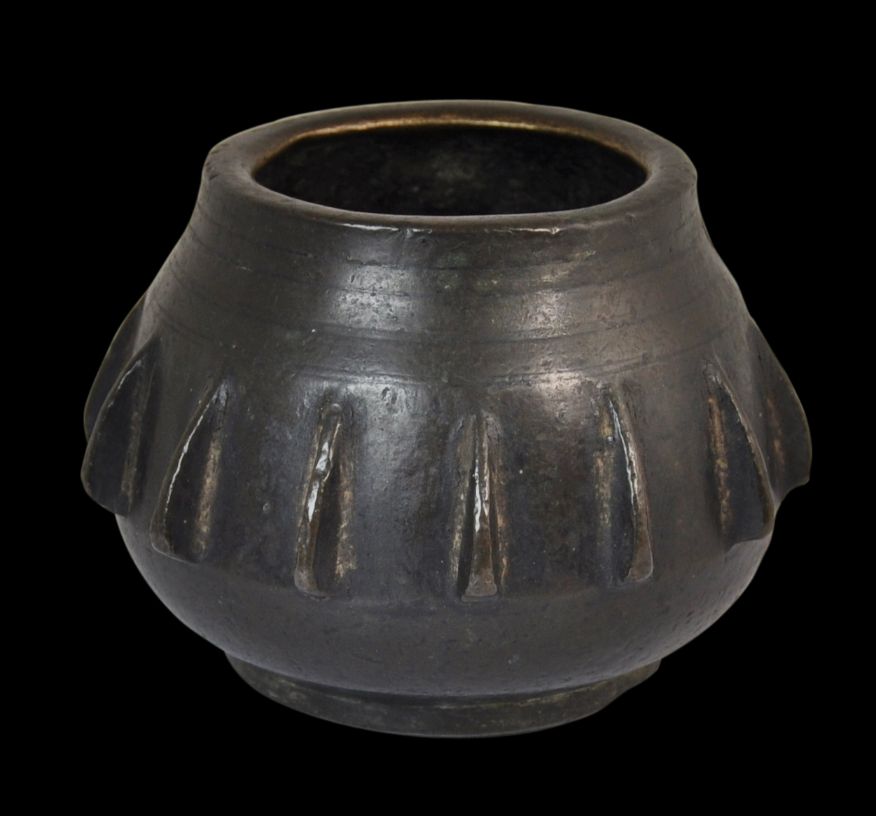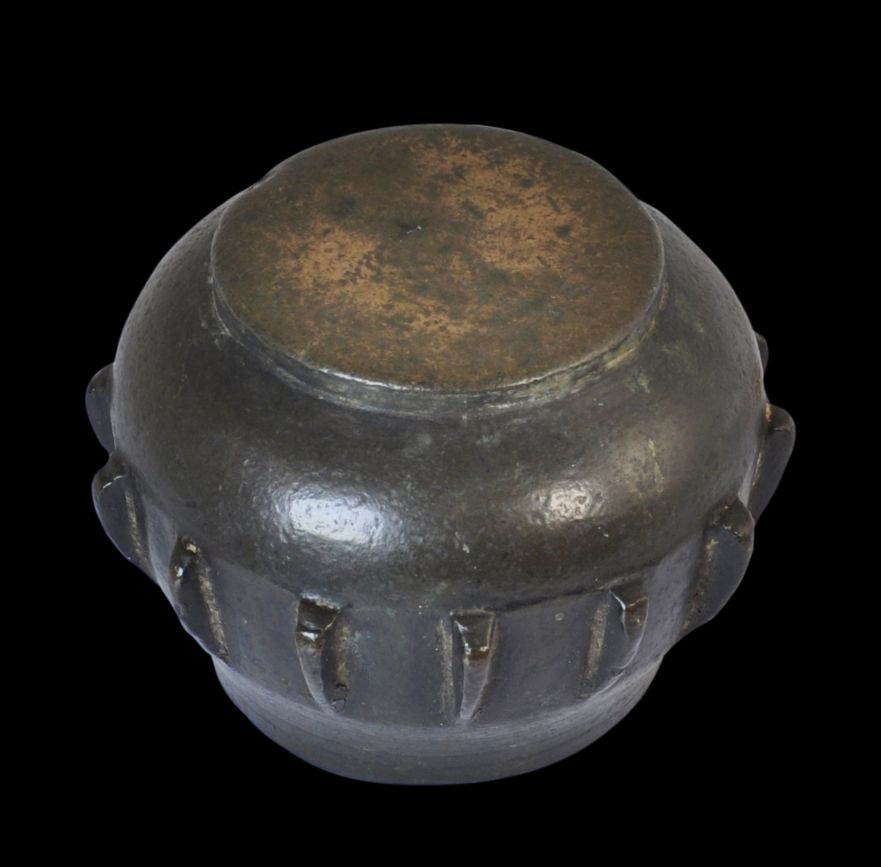Enquiry about object: 6042
Large Ottoman Bronze Mortar
Caucasus, Armenia or Ottoman Turkey circa 16th-17th century
height: 9.4cm, diameter: 14.4cm, weight: 1,497g
Provenance
UK art market
This mortar, of circular, bulbous form, sits on a low flat foot and has been cast with 14 flanges or fins around its sides, spread equidistant around the body. These flanges whilst giving the mortar much of its decorative appeal acted to reinforce the mortar’s body.
Mortars of this type with radiating fins seem to have their origins in twelfth century Moorish Spain, and possibly earlier (one in Cordoba’s Archaeological Museum is attributed to the tenth century.) Two examples in the Khalili Collection are illustrated in Maddison & Savage-Smith (1997, p. 299). These are ascribed to circa 13th-14th century. A 12th-13th century example is in the collection of the Instute du Monde Arabe in Paris (see Instute du Monde Arabe, 2005, p. 185 for an illustration.) Another example forms lot 161 at Christie’s London ‘Art of the Islamic and Indian Worlds including Art from the Collection of Dr Mohammed Said Farsi’, October 5, 2010.
The example here is related to these earlier examples but has taken on a more rounded and pleasing shape. A similar example with a probable later ownership inscription in Armenian and dated to 1718 is illustrated in Hassiotis (2010, p. 165).
The mortar here, like other examples, is of extremely thick cast metal so as to allow the repeated blows of a heavy pestle. Such mortars were not necessarily for grinding spices for food but for grinding herbs and other ingredients for the preparation of drugs and balms.
Overall, this is a fine example, decorative and of good size. As might be expected, it is heavy for its size. It has a fine, chocolate colour with contours that have been smoothed by use and handling.
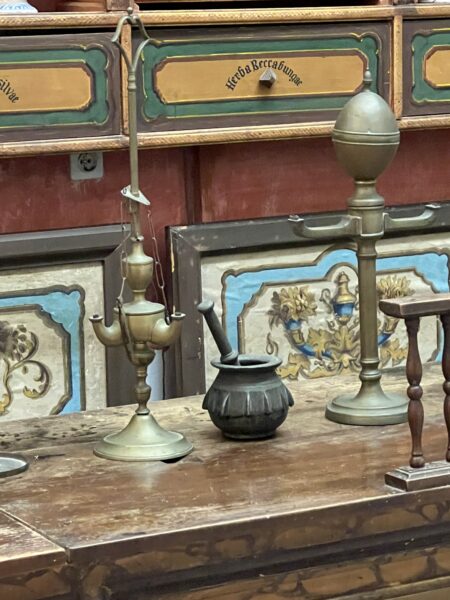
Above: A related Ottoman-style finned mortar and its pestle, photographed in the pharmacy of the Franciscan friary, Dubrovnik, Croatia. The Franciscans were specialists in grinding up herbs for medicines. The pharmacy in Dubrovnik dates to 1317.
References
Etude Tajan, ‘Art Islamiqie: Tableaux Orientalistes’, Paris, June 5, 1995.
Hassiotis, I.K., et al., Aspects of Armenian Art: The Kalfayan Collection, Museum of Byzantine Culture, 2010.
Maddison F. & E. Savage-Smith, Science, Tools & Magic: The Nasser D. Khilili Collection of Islamic Art, The Nour Foundation, 1997.
L’Age d’Or des Sciences Arabes (Exposition Presentee a l’Institut du Monde Arabe, Paris, 25 October 2005-19 March 2006), Instute du Monde Arabe, 2005.
Christie’s South Kensington ‘Indian and Islamic Works of Art and Textiles’, April 11, 2008.
Christie’s London ‘Art of the Islamic and Indian Worlds including Art from the Collection of Dr Mohammed Said Farsi’, October 5, 2010.


